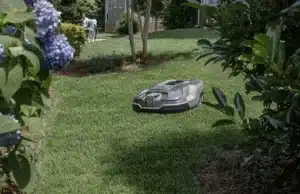| SEO | |
| Meta title | EPDM Roof Installation: Common Mistakes to Avoid |
| Meta desc. | To avoid EPDM roofing installation mistakes, prep the surface, check the temperature, get training, use the right tools, fix ponding, maintain, and flash properly. Learn more. |
EPDM, or Ethylene Propylene Diene Monomer, is an affordable and robust flat roofing material made from synthetic rubber. If installed incorrectly, this will lead to several serious issues, such as leaks, a vastly reduced lifespan, and eventually a total roof failure.
For a successful EPDM roofing installation, properly prepare the surface, apply the correct adhesive, handle the membrane carefully, seal seams and edges correctly, follow temperature guidelines, receive adequate training, use recommended tools, address ponding water, perform regular maintenance, and install flashing properly.
EPDM Roofing Installation Errors to Avoid
The following are the mistakes you should avoid:
Mistake 1: Inadequate Surface Preparation
Proper installation of an EPDM roof requires a flat, dry surface with a smooth finish. The main challenge arises when contractors rush through this important step. Dust, dirt, moisture, and other debris prevent the adhesive from bonding correctly, leaving the membrane with wrinkles, unsightly bubbles, and lift.
How to avoid it?
- Clean your surface. Use a broom and vacuum to eliminate remaining dust and debris from the surface.
- Your roof surface should remain completely dry before application.
- Removing sharp objects and ensure the roof surface is smooth before laying the membrane.
- Use a primer if required, especially on old roofs.
Mistake 2: Incorrect Adhesive Application
Adhesive is a key part of EPDM roof installation. Insufficient adhesive or an incorrect application can lead to membrane peeling, and too many adhesive bubbles can create soft spots.
How to avoid it?
- Read the instructions from the manufacturer.
- Evenly apply the adhesive with a brush or roller.
- Wait till the glue is tacky, then lay your membrane.
Mistake 3: Improper Membrane Handling
EPDM membranes are incredibly tough, but careless handling can lead to damage before they are even installed. If you drop the membrane, drag it across the roof, or fold it too tightly, it can tear, stretch, and cause permanent wrinkles.
How to avoid it?
- Keep the membrane clean and dry until you can use it.
- Ensure it is unrolled and laid flat out on your roof.
- Avoid pointed objects that can puncture the material.
- Have it settled if wrinkled before you start the installation.
Mistake 4: Overlooking Seams and Edges
Seams and edges are the weakest points of any EPDM roof. If not sealed properly, water will find its way into your building, destroying insulation, woodwork, and sometimes even the interior.
How to avoid it?
- Install seam tape or adhesive as per the manufacturer’s instructions.
- Push down hard on the seams to make sure they bond together.
- Check for bubbles and carefully release trapped air by pressing.
Mistake 5: Ignoring Temperature Guidelines
Temperature will greatly impact how well the EPDM membrane sticks and cures. Laying it in cold or hot weather will affect the membrane’s adhesive ability and flexibility.
How to avoid it?
- Membrane installation should take place between 40°F (5°C) and 90°F (32°C).
- Allow time for materials to adjust to the roof temperature before installation.
Mistake 6: Lack of Proper Training
EPDM roofing installation seems easy, but it requires skill and a general understanding of the process. An untrained person might miss critical steps, like priming, flashing, or seam sealing, leading to roof failure.
How to avoid it?
- For a DIYer, watch tutorials and refer to manufacturer guides.
- Hiring a professional EPDM roofer is ideal for larger roofs or those with complex details.
Mistake 7: Not Using Recommended Tools and Accessories
Using random tools or cheaper accessories can affect the installation quality. Poor-quality rollers, sealants, or tapes may not work well with EPDM materials.
How to avoid it?
- Always use tools and materials recommended by the EPDM manufacturer.
- Use a roller to apply even pressure over adhesives and seams.
- Choose high-quality sealants and tapes designed for EPDM roofing.
Mistake 8: Failing to Address Ponding Water
Flat roofs tend to accumulate water. It is not worth ignoring. EPDM is water-resistant, yet prolonged ponding water will cause membrane deterioration and leaks. It will even foster algae and mold growth.
How to avoid it?
- Provide drainage before membrane installation.
- Develop a slight slope with tapered insulation or a leveling compound.
- Install roof drains and scuppers in the proper locations.
- After installing, inspect regularly for and repair any ponding conditions.
Mistake 9: Neglecting Regular Maintenance
Many people think EPDM roofs are maintenance-free, but that’s not true. Over time, debris, UV rays, and weather changes can cause damage. Without maintenance, small issues can become expensive repairs.
How to avoid it?
- Inspect the roof twice a year and after storms.
- Clean off leaves, branches, and other debris.
- Check for bubbles, tears, or seam separations.
- Re-seal any problem areas immediately.
Mistake 10: Improper Flashing Installation
Flashing is used around chimneys, vents, skylights, and edges to keep water out. Poor flashing installation is a common error. Water can easily enter around roof penetrations if flashing is loose, misaligned, or missing.
How to avoid it?
- Use the right type of flashing for each area.
- Apply enough adhesive and press down firmly.
- Seal all joints with lap sealant.
- Consider using pre-formed flashing pieces if you’re unsure about cutting and shaping.
Conclusion
Proper EPDM roofing installation requires following the right steps and avoiding key mistakes. Prepare the surface well, apply adhesive correctly, and handle the membrane carefully. Pay close attention to seams and edges, and follow temperature rules. Get proper training, use recommended tools, fix ponding water, and do regular maintenance.












